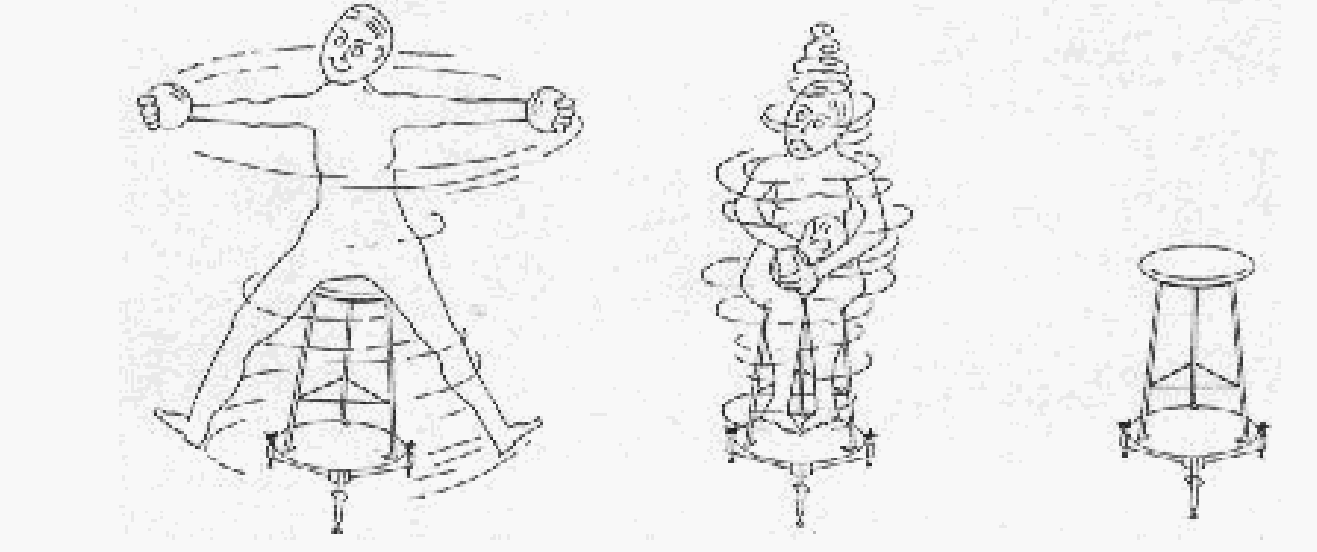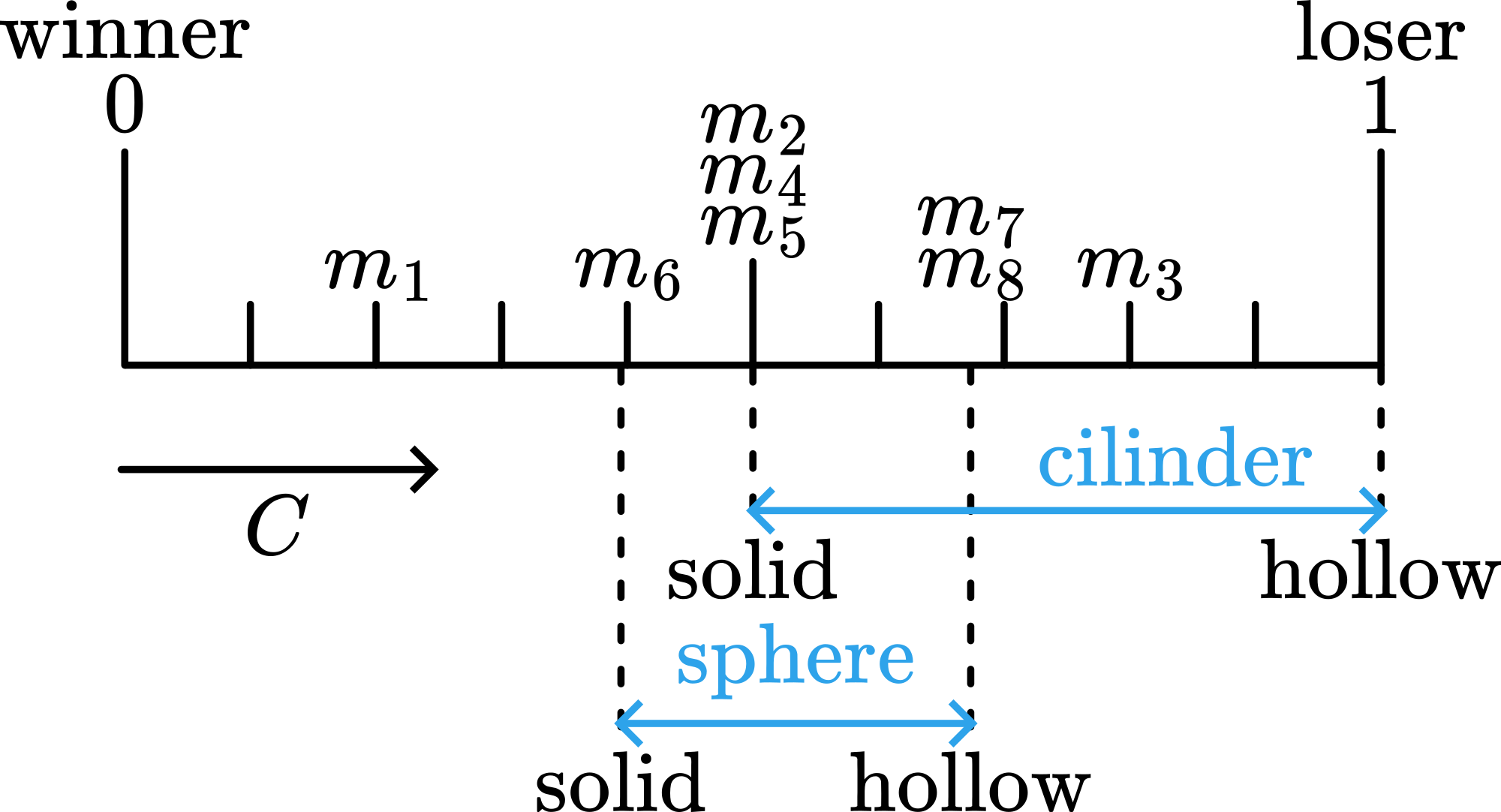01 Dropping Rolls of Toilet Paper#
Aim#
To show that for a free falling object the rotational acceleration reduces the linear acceleration.
Subjects#
1M40 (Conservation of Energy)
1Q20 (Rotational Energy)
Diagram#

Fig. 201 .#
Equipment#
Two equal rolls of toilet paper.
Presentation#
Two rolls of toilet paper are dropped simultaneously from the same height ( \(\approx 2 \mathrm{~m}\) ), one of them while holding on to the paper-end of the roll. This roll hits the floor later than the other.
Explanation#
When you drop the toilet paper roll while holding on to one end, the roll is momentarily rotating about an axis at the edge of the roll. The angular acceleration \((\alpha)\) of the roll during its fall can be found from \(\alpha=\frac{\tau}{I}\), where the net torque is given by \(\tau=m g r_{2}\) (see Figure 202).

Fig. 202 .#
The acceleration of the center of mass (a) is related to the angular acceleration of the roll by \(a=\alpha r_{2}\), so the roll accelerates downward by \(a=\frac{m g r_{2}^{2}}{I}\).
Since \(I>m r_{2}^{2}\left(I=\frac{m}{2\left(r_{1}^{2}+r_{2}^{2}\right)}+m r_{2}^{2}\right)\), we find that \(a<g\).
Remarks#
Working with the above formulas, it can easily be shown that \(a=\frac{2}{3+R^{2}} g\),
where \(R=\frac{r_{1}}{r_{2}}\). For our toilet rolls \(R=0.4\), so \(a=0.63 \mathrm{~g}\).
This means that when the paper-end held roll is dropped from a height of about \(1.25 \mathrm{~m}\) and the other roll from a height of about \(2 \mathrm{~m}\), both rolls hit the floor simultaneously.
Sources#
Ehrlich, R., Why Toast Lands Jelly-Side Down: Zen and the Art of Physics Demonstrations, pag. 97
